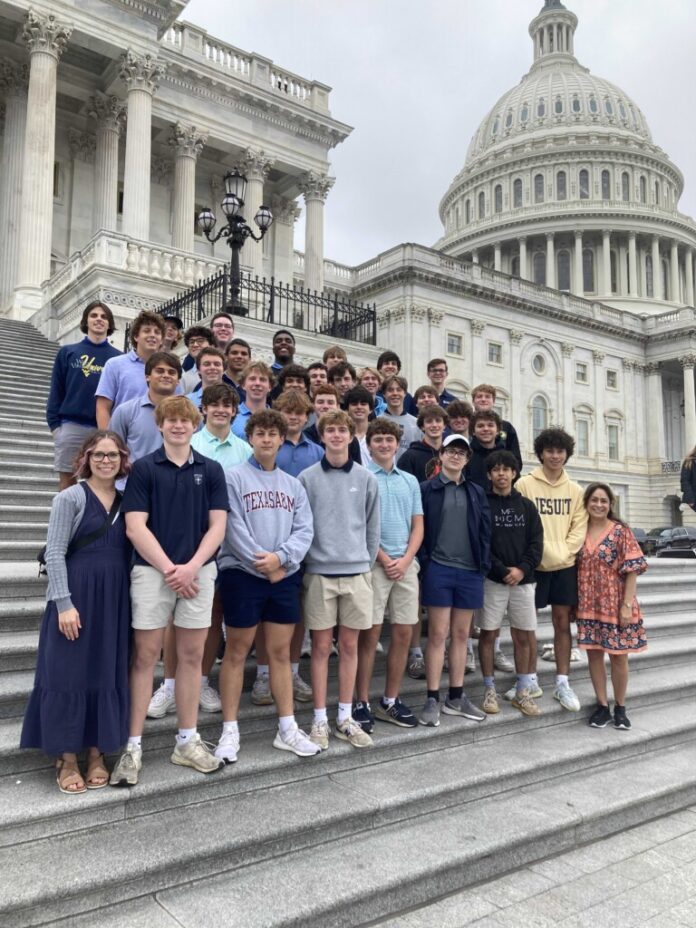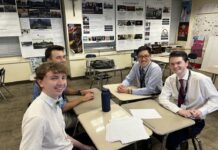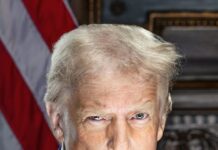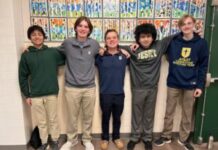For the past 9 years, Jesuit has offered a summer U.S. government class designed to teach seniors US government course in early June. It may seem like just another summer school course, but in the final week of class, students travel to Washington D.C., in order to garner a unique perspective in America’s government, civic participation, and service to not only our community but also our country.
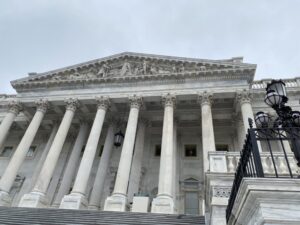
Summer School Instruction
The US Government class during the summer begins earlier in the year with applications to join the course. Mrs. Segal, current Faculty Chair of the Social Studies Department, manages the program from this initial step until its return to Dallas from Washington.
The application process, according to Mrs. Segal includes “reflection questions about what students think they would bring to the program, what they hope to get out of the program, and they additionally have to provide teacher recommendations to verify they are mature enough for traveling.”
The unique nature of the government class means that students must also be trustworthy to represent Jesuit while in the nation’s capital.
“While in D.C., students are granted a certain amount of free time and independence in their activities so we need to be able to trust them on their own,” Mrs. Segal concluded.
Once an applicant is accepted, they move into classroom instruction for two weeks at the beginning of summer school. Any attendant of Jesuit’s summer school knows that cramming a monthlong course into just 3 weeks is hard enough on teacher and student alike – but for the government class, it was more rigorous, with just 2 weeks of study before the trip.
“I’m also looking for students who can handle an accelerated academic environment. It’s a lot of processing of reading material in such a short amount of time,” Mrs. Segal stated, “students have to be willing to try their hardest to keep up.”
In total, 35 students participated in the summer school program, with the group divided into 3 sections of 12, to help manage the accelerated academic rigor and make sure everyone was on pace with the course material. Mrs. Segal and Mr. Segal taught all three courses.
I likewise interviewed Christopher Simington, a participant in the program, about the 2 weeks of instruction.
“We spent the first two weeks learning the basics of government,” he commented, “it included basic knowledge about the different structures of the separate branches of government. It was overall preparation for the trip written large.”
Traveling to D.C
Next, the group of students and faculty traveled to D.C. for the final week of their class. Travel Chaperones including Ms. Segal, Mr. Host, and Ms. Zinc from student affairs. Jesuit Dallas partnered with CloseUp, a private student traveling program designed to “help your students engage in productive, civil discourse, and experimental travel to educate all involved.”
The reason why Jesuit choose CloseUp out of all the other high school traveling programs was that, according to Mrs. Segal, “they are a nonpartisan organization whose sole goal is to increase civic efficacy. It’s my shared goal as well, I want my students to have a better understanding of their role in a functioning democratic society, and to help them understand how their government actually functions,” said Mrs. Segal,
“It’s very much in line with our values as a Jesuit institution, it’s in line with social justice being conducted through community participation. In this case, it’s a bigger community, but that helps us teach all the bigger ways you can choose to participate.”
When asked about the planning and preparation for the trip, Mrs. Segal stated that CloseUp managed the day-to-day schedule and focus sessions. “The instructors did a phenomenal job. On the first day of the trip, we went to the Thomas Jefferson Memorial and then the FDR Memorial. For the Jefferson trip, the boys talked about what it means to have a small representative democracy, aka Jefferson’s political ideologies. When we went to FDR’s model, we talked about what changed between the two presidencies that saw a change in how government interacts with our lives. The two weeks in the classroom allowed these instructive moments to be even more rich in content and understanding.”
Chase Brown is a current Jesuit senior who participated in the 5-day trip, he believed that DC was a “town obsessed with politics and that there wasn’t much to do there, but that changed when we went into ethnic neighborhoods like Chinatown, and I got to experience a part of this East Coast culture I had never seen before.”
“The first thing I noticed going into DC was the architecture of Ronald Reagan Airport with all these Greek columns which was so awesome to me. It immediately set the city apart from everything else.”
Another core tenet of the trip was the speaking opportunities given. Mrs. Segal commented on the following:
“A lot of the people we plan to meet with during our tour are former Jesuit alumni, such as Lieutenant Colonel Donald Neal, a man with a deep connection to Jesuit and also assistant to the Chairmen of the Joint Chiefs of Staff, which is amazing. He can speak to the boys about how he serves his community through his capacity, and how to connect the boy’s classroom experiences to match up with his experience of service. It also applies to the Chaplain of the House of Representatives, whose religious experiences apply to the boys’ religious growth.”
There are a lot of role models built into the experience, especially the meeting with Lt. Col. O’Neil, a man who by his own admission was a mediocre student at Jesuit, but used his understanding of service and commitment to propel him forward into the military. He was a perfect role model for the boys, and his teachings on how the experience of working with others, not the gradebook, is what will stick with you from your Jesuit experience were awe-inspiring to watch. What he taught the boys also was countercultural, teaching them that one of the biggest things they can do is try to be authentic person, a person who is open to growth and a person who people want to work with. He taught them how valuable those skills are.”
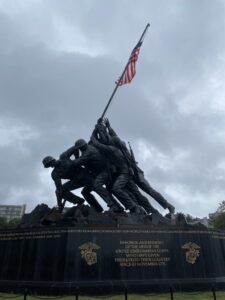
Christopher Simington was in awe of the Capital Building trip, as he and the others “went into the Senate and House of Representative Buildings, and got to meet current membres of the Congress and their staffers. But the whole experience wasn’t only about the US national government, it was also about how other countries’ governments work and how we are perceived. We visited the Saudi Arabian Embassy and had them talk to us about their visions for the future of their country and their views on the US-Saudi bilateral ties.”
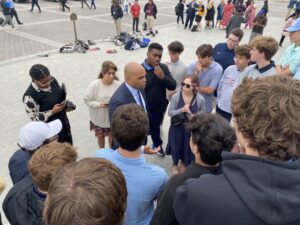
Additionally, the boys were given the freedom to explore select locations, such as the Smithsonian Museum, or a visit to the Georgetown neighborhood. In the latter experience, I was studying at Georgetown University for a debate camp, so I walked on over to spend the evening with the boys. Wisconsin Avenue, a popular thoroughfare in the region, was packed with people by that time, and every now and then I could see a Jesuit student through the throng of shoppers and restaurant goers. It was a moment for all the students to be responsible for their own time, as long as they rendezvous at the correct time to head back to the hotel.
When asking Mrs. Segal about the aspects of DC that are the most jarring to students, she believed it had to do with public transportation.
“The metro to Capitol Hill is always the most shocking to the boys since we’re coming from a city with no public transportation. Seeing a walkable city, with flows of traffic, trains, and metros, always was amazing to them.”
“Yeah, DC was pretty fast-paced, it’s a melting pot of all these different cultures and backgrounds so it was really hectic, it never got boring walking around the streets. There was always something new to see,” said Christopher.
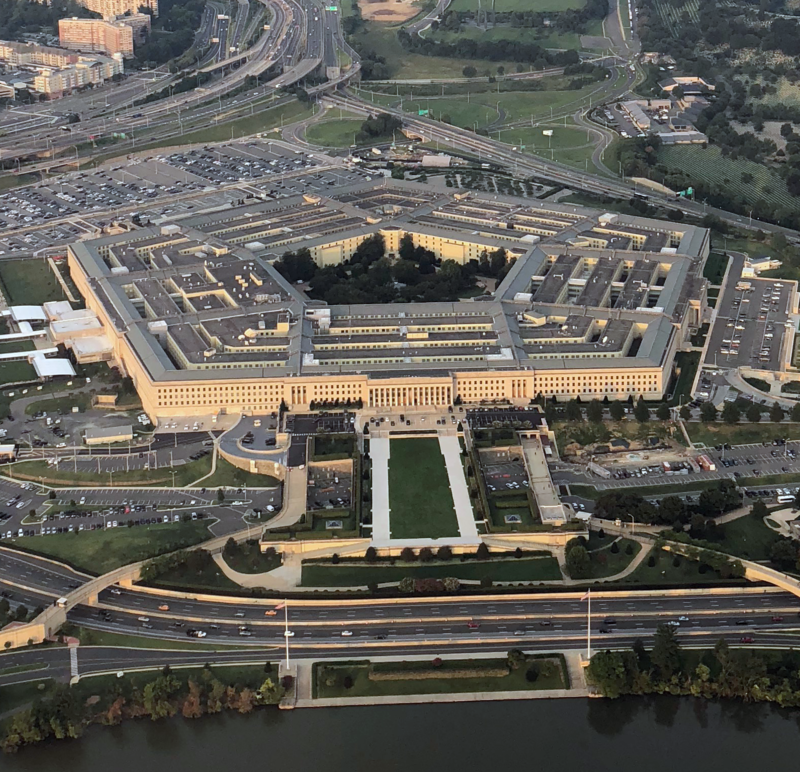
Francisco Almaguer had his own take on the capital city: “Well it was certainly wetter in D.C. than Texas!” (We got rained on pretty much constantly!)
“One of the things that stuck out to me was how much greener it is up there. There are huge trees and forests on the banks of the Potomac River that you just don’t have in Texas.”
Departure and Conclusions
On Friday, June 23rd, the Jesuit DC Summer trip came to an end with a flight back to Dallas. The title of the CloseUp discussion for the day was “Where do we go from here?” It seemed that with their new experiences in the nature of U.S. government, participation in a democratic society, and lessons on service to others, the Jesuit students grew in character throughout the trip. And when they continue their lives in and outside of Jesuit, they know that these lessons will stick with them to help them continue to be Open to Growth.
At the end of the trip, the boys were asked about their favorite moments throughout their adventure. “It was definitely visiting the Pentagon,” Chase commented, “but the museums were pretty cool, like the Smithsonian Museum of Natural History.”
Francisco believed his favorite day was the Capitol visit, by virtue of its “exploration of the chambers of Congress as well as meeting with the House Chaplain, a Senatorial aide, and current Representative.”
“To anybody reading this,” Christopher stated, “if you want to work or live in DC, it’s a great place that’s absolutely life-changing when you get to experience the capitol and its different atmosphere, layout, cultures, and communities.”
“Everyone had a different answer on what their favorite moment was,” concurred Ms. Segal, “which made me happy that the boys had gotten something out of their 5 days of experience.”
Stay tuned to The Roundup for more coverage on trips throughout the summer at Jesuit!


